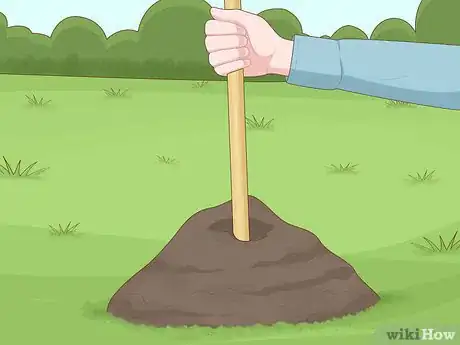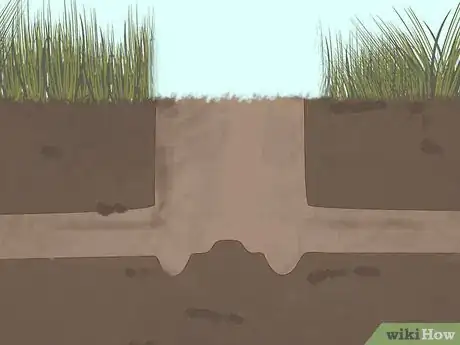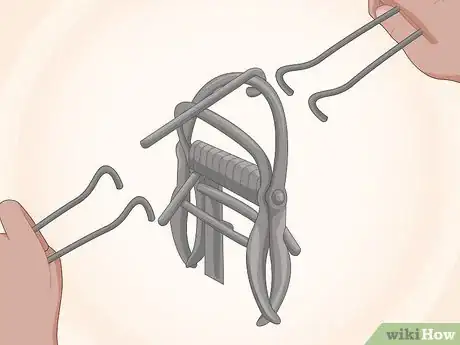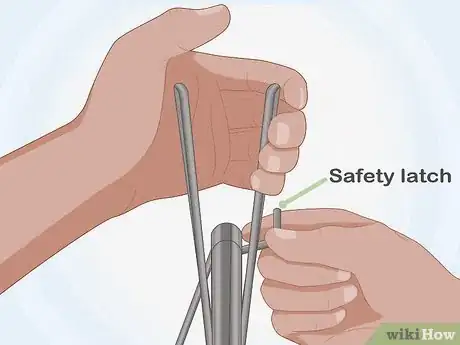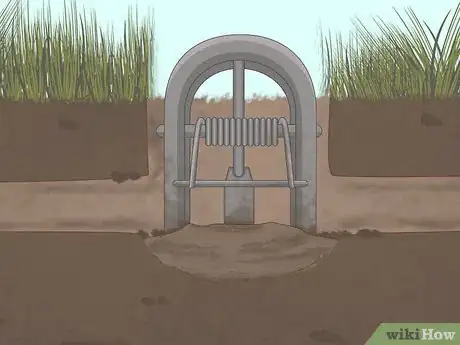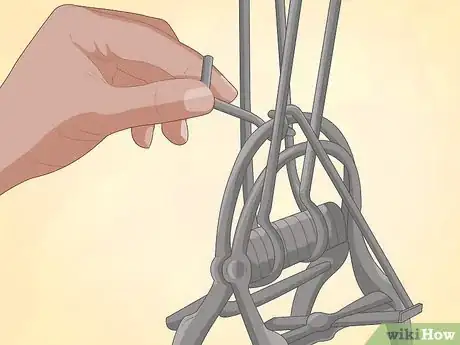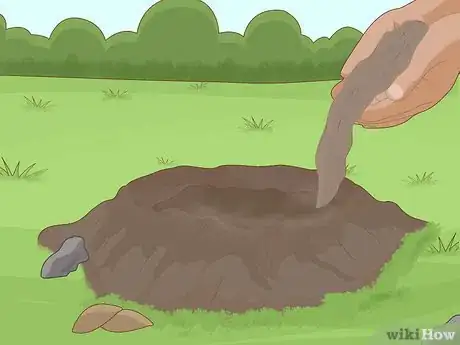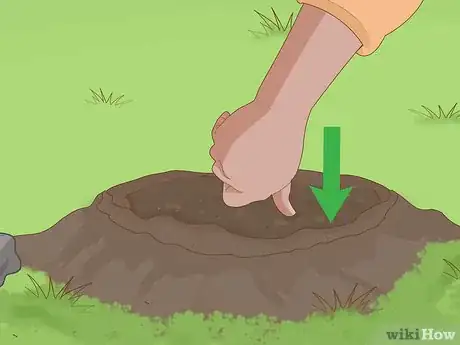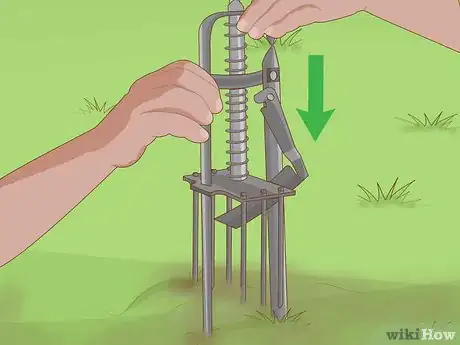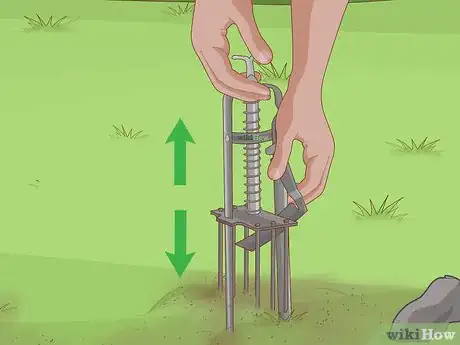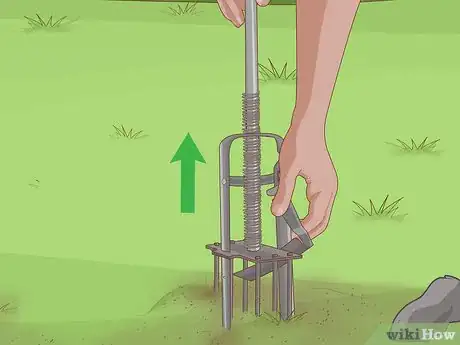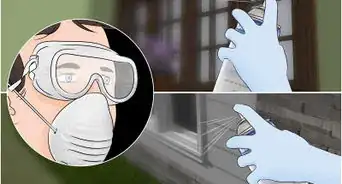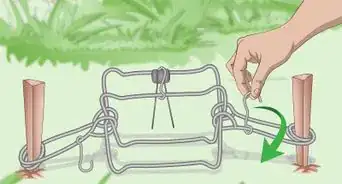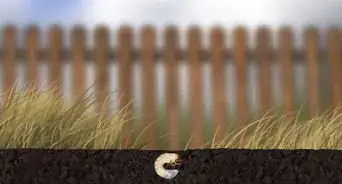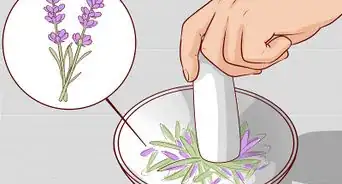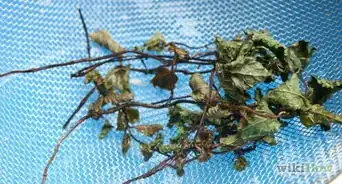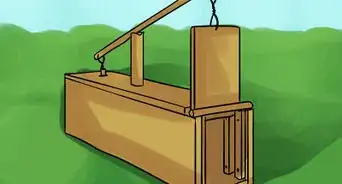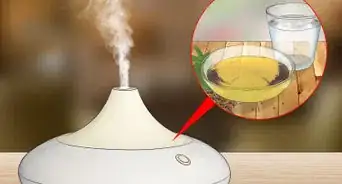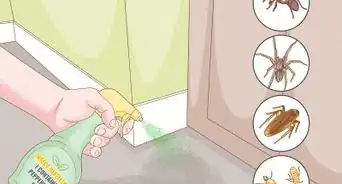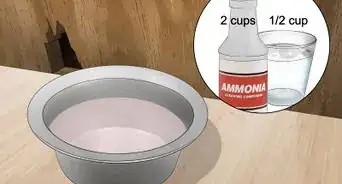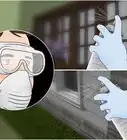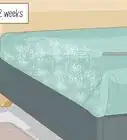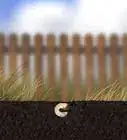This article was co-authored by Elmer Bensinger. Elmer Bensinger is a Pest Control Specialist with Eden Advanced Pest Technologies in Spokane, Washington. With over 20 years of experience, Elmer specializes in integrated pest management and products such as insecticides and rodenticides. He studied business at South Puget Sound Community College.
There are 8 references cited in this article, which can be found at the bottom of the page.
This article has been viewed 42,961 times.
If you have a mole problem, Victor mole traps are an effective way to kill them. The 2 main kinds of Victor mole traps are the Out O'Sight and Plunger-Style mole traps. The Out O’Sight trap has a set of jaws or teeth, while the Plunger-Style has spring-loaded spikes that shoot into the ground. If you find an active mole tunnel and set the trap properly, you can get rid of the moles on your property.
Steps
Identifying Good Trap Locations
-
1Find mole tunnels in your lawn. Look for mounds of dirt around your property, as this is a sign of a tunnel. Poke a hole through the mound with a stick or the end of a broom handle. If the hole is covered up 24 hours later, you can assume that it is an active mole tunnel.[1]
- If you have multiple mounds around your lawn, put a hole in each of them to discover all the active tunnels.
-
2Dig a hole in the top of an active tunnel. Pick a tunnel that's been covered by a mole, and dig a hole in the top of the tunnel with a spade. The hole should be about 6 inches (15 cm) wide and penetrate down into the mole tunnel. Dig down into the tunnel and put the dirt to the side for later.[2]Advertisement
-
3Feel for the tunnel with your fingers. Stick your fingers into the hole you made and feel around for the pathway to the mole tunnel underground. You should feel 2 holes on each end of the hole you just dug.[3]
Setting the Out O'Sight Mole Trap
-
1Create a mound of dirt in the center of the hole. Use some of the dirt that you dug up and place it back into the center of the hole until the top of the mound sits flush with the ground. The mound should be centered in between the holes in the tunnel. The bottom pan or trigger on the bottom of your trap should rest on the top of this dirt mound.[4]
-
2Place the setting levers over the springs. Thread the setting levers under the top of the handles on each side of the trap. Then, fit the setting levers over the springs in the middle of the trap and slide them upward.[5]
-
3Push the levers together with the palms of your hands. You may have to use a good amount of force to open up the teeth of the trap. Once both levers touch each other, your trap’s teeth should be fully opened.[6]
-
4Flip the safety latch over the top of the trap. The safety will be a small metal clip on the top of your trap. Flip it upwards so that it catches on the other side of the clip and holds your trap open. It's important to keep the safety latch engaged until the trap is completely set up. You can now unthread the setting levers and set them aside.[7]
- Grip both of the levers with one hand to keep them open while you set the safety.
-
5Place the end of the setting bar on the trigger pan. The trigger pan is a metal tab on the bottom of your trap, and is what the mole will press on to close the trap. The setting bar is the bar on the top of the trap with a hooked end. Hook the end of the setting bar onto the edge of the trigger pan. Make sure the safety latch is still engaged so that the trap doesn't close.[8]
- When the pan is pushed up, the setting bar will disengage and the trap will close shut.
-
6Place the trap around the dirt mound in the hole. Position the trap so that the teeth don’t block the holes in the tunnel. The teeth of the trap should be around the mound and fit around holes in the tunnel. Once the mole gets to the dirt mound, it will try to dig through the mound, which will engage the trap.[9]
-
7Release the safety on the top of the trap. Flip the safety over. If you set everything up correctly, the teeth of the trap should remain open and slam shut when pressure is applied to the bottom of the trigger pan.[10]
- Keep pets and children out of the yard when the mole trap is engaged.
Setting a Plunger-Style Mole Trap Instead
-
1Fill the hole up with loose dirt. If the dirt under the trap is too compact, the spikes won't be able to penetrate into the ground fast enough to catch the mole. Break up the soil that you dug up so that it's loose before placing it back into the hole.
-
2Press down on an active mole tunnel with your thumb. Making a depression in the dirt will collapse the tunnel. This will require the mole to burrow through the obstructing dirt the next time it uses the tunnel, which will engage your trap.[11]
-
3Press the trap over the depression. Position the trap so that the side spikes don’t block the tunnel below. The trigger pan is the metal square on the bottom of the trap, and should be positioned directly over the depression that you created in the dirt. Press down on the trap so that the side spikes go into the ground and the trigger pan runs flush with the ground.[12]
- The trap latch is the metal rod attached to the top of the trap and should be in the downward position.
-
4Pull the plunger on the top of the trap up and down. Pushing the spikes in and out of the dirt will loosen the soil and make the trap more efficient. Pull up and down on the plunger on the top of the trap several times until the soil is loose.[13]
- Keep hands and feet away from the bottom of the trap or you may injure yourself.
-
5Pull up on the plunger until the trap snaps into place. Once you pull the plunger enough, the trap latch should snap securely onto the trigger pan.Your trap is now set. The next time a mole tries to burrow through the dirt, the spikes will spring down into the dirt where the mole is.[14]
- Keep children and pets out of the yard when the mole trap is engaged.
Expert Q&A
-
QuestionWhere do you set mole traps?
 Elmer BensingerElmer Bensinger is a Pest Control Specialist with Eden Advanced Pest Technologies in Spokane, Washington. With over 20 years of experience, Elmer specializes in integrated pest management and products such as insecticides and rodenticides. He studied business at South Puget Sound Community College.
Elmer BensingerElmer Bensinger is a Pest Control Specialist with Eden Advanced Pest Technologies in Spokane, Washington. With over 20 years of experience, Elmer specializes in integrated pest management and products such as insecticides and rodenticides. He studied business at South Puget Sound Community College.
Pest Control Specialist It depends on the style of trap you're using, but they typically either go in the mole hill, on top of it, or right next to it. In either case, you're going to need to figure out where the mole actually is before you set the trap.
It depends on the style of trap you're using, but they typically either go in the mole hill, on top of it, or right next to it. In either case, you're going to need to figure out where the mole actually is before you set the trap. -
QuestionWhat's the most effective mole trap?
 Elmer BensingerElmer Bensinger is a Pest Control Specialist with Eden Advanced Pest Technologies in Spokane, Washington. With over 20 years of experience, Elmer specializes in integrated pest management and products such as insecticides and rodenticides. He studied business at South Puget Sound Community College.
Elmer BensingerElmer Bensinger is a Pest Control Specialist with Eden Advanced Pest Technologies in Spokane, Washington. With over 20 years of experience, Elmer specializes in integrated pest management and products such as insecticides and rodenticides. He studied business at South Puget Sound Community College.
Pest Control Specialist The claw-style traps that crush the mole are the most effective. Unfortunately, the live traps aren't nearly as effective as those claw traps.
The claw-style traps that crush the mole are the most effective. Unfortunately, the live traps aren't nearly as effective as those claw traps. -
QuestionWhat can I use instead of a trap?
 Elmer BensingerElmer Bensinger is a Pest Control Specialist with Eden Advanced Pest Technologies in Spokane, Washington. With over 20 years of experience, Elmer specializes in integrated pest management and products such as insecticides and rodenticides. He studied business at South Puget Sound Community College.
Elmer BensingerElmer Bensinger is a Pest Control Specialist with Eden Advanced Pest Technologies in Spokane, Washington. With over 20 years of experience, Elmer specializes in integrated pest management and products such as insecticides and rodenticides. He studied business at South Puget Sound Community College.
Pest Control Specialist There are machines you can buy that will pump the mole's tunnel with carbon dioxide to put it down. Those are fairly effective. The mole won't experience any pain either, if that's something you're worried about. It will just go to sleep and die quietly.
There are machines you can buy that will pump the mole's tunnel with carbon dioxide to put it down. Those are fairly effective. The mole won't experience any pain either, if that's something you're worried about. It will just go to sleep and die quietly.
Things You’ll Need
- Gardening spade
- Mole trap
References
- ↑ https://youtu.be/bcd1K3qw2P8?t=26s
- ↑ https://youtu.be/R53qpFB4wfQ?t=2m23s
- ↑ http://victorpest.scene7.com/is/content/woodstream/victorpest/us/resources/instructions/vp-us-instructions-0645.pdf
- ↑ https://www.domyown.com/msds/victor-out-o'sight-mole-trap-instructions.pdf
- ↑ https://youtu.be/XD5WG5MhzCk?t=2m13s
- ↑ https://youtu.be/XD5WG5MhzCk?t=2m37s
- ↑ https://youtu.be/XD5WG5MhzCk?t=2m57s
- ↑ https://www.domyown.com/msds/victor-out-o'sight-mole-trap-instructions.pdf
- ↑ https://www.domyown.com/msds/victor-out-o'sight-mole-trap-instructions.pdf
- ↑ https://www.domyown.com/msds/victor-out-o'sight-mole-trap-instructions.pdf
- ↑ http://victorpest.scene7.com/is/content/woodstream/victorpest/us/resources/instructions/vp-us-instructions-0645.pdf
- ↑ http://victorpest.scene7.com/is/content/woodstream/victorpest/us/resources/instructions/vp-us-instructions-0645.pdf
- ↑ https://youtu.be/jCPpyMsSwiE?t=3m50s
- ↑ http://victorpest.scene7.com/is/content/woodstream/victorpest/us/resources/instructions/vp-us-instructions-0645.pdf
